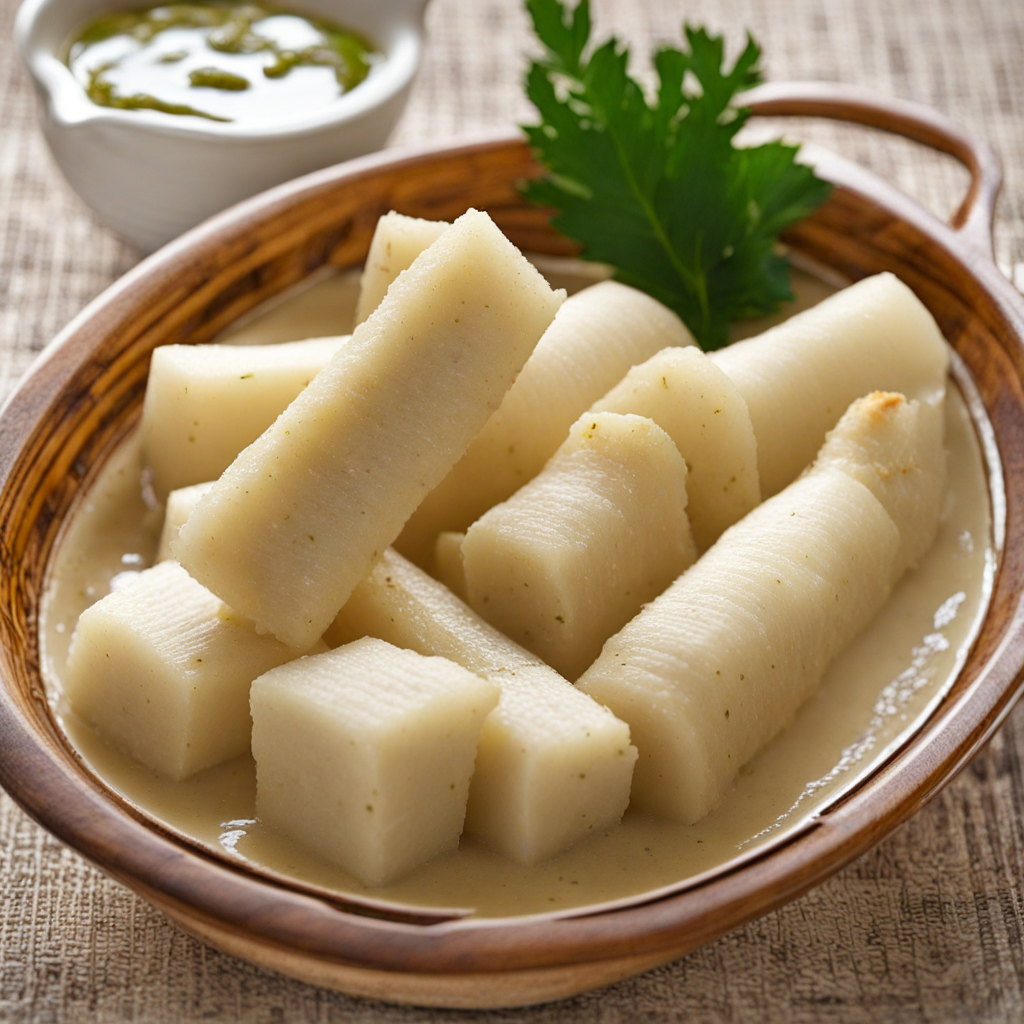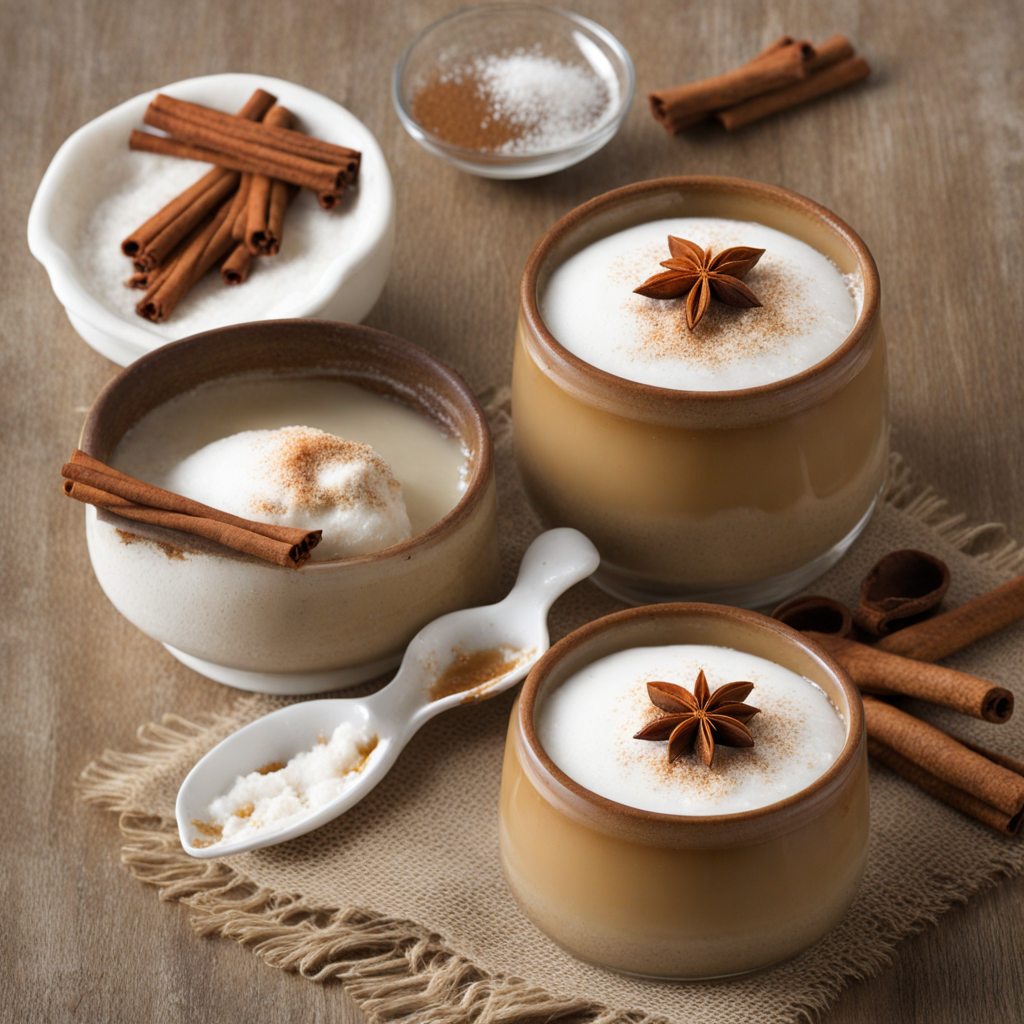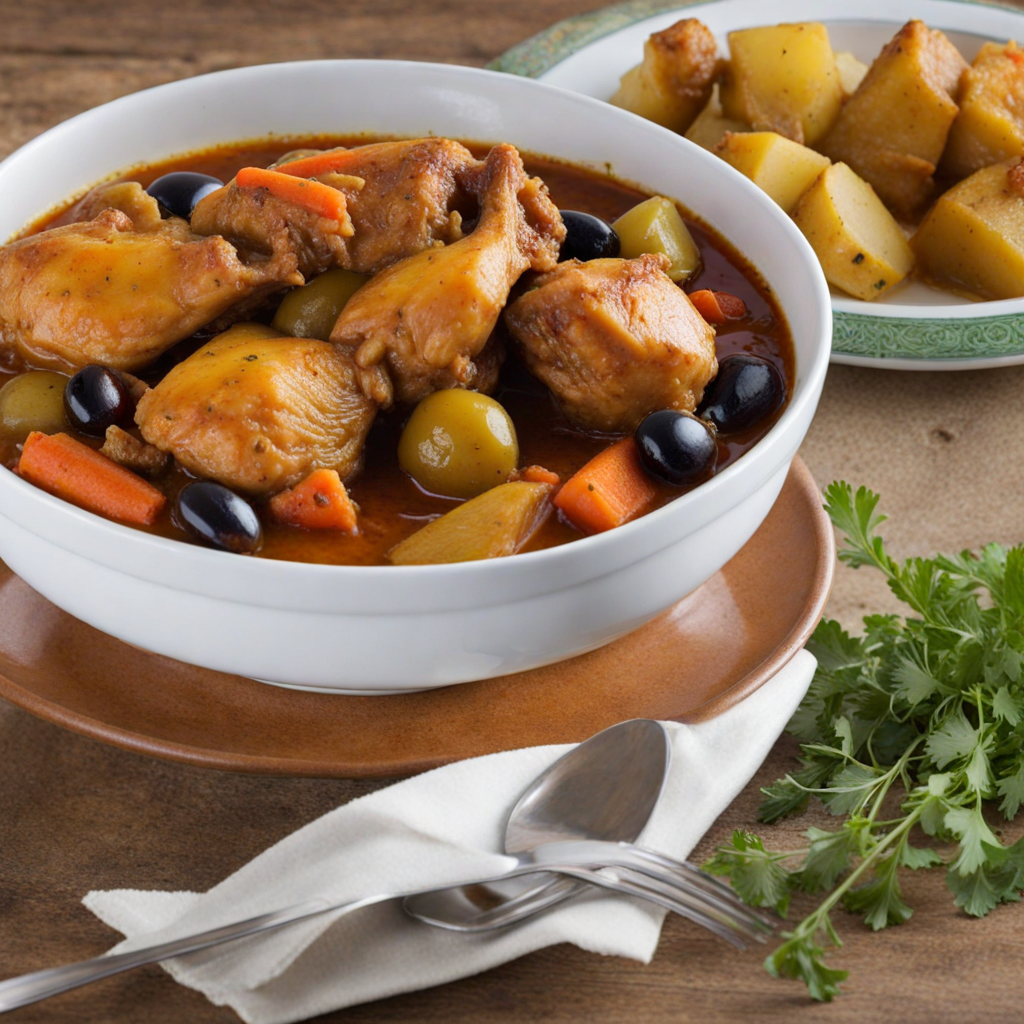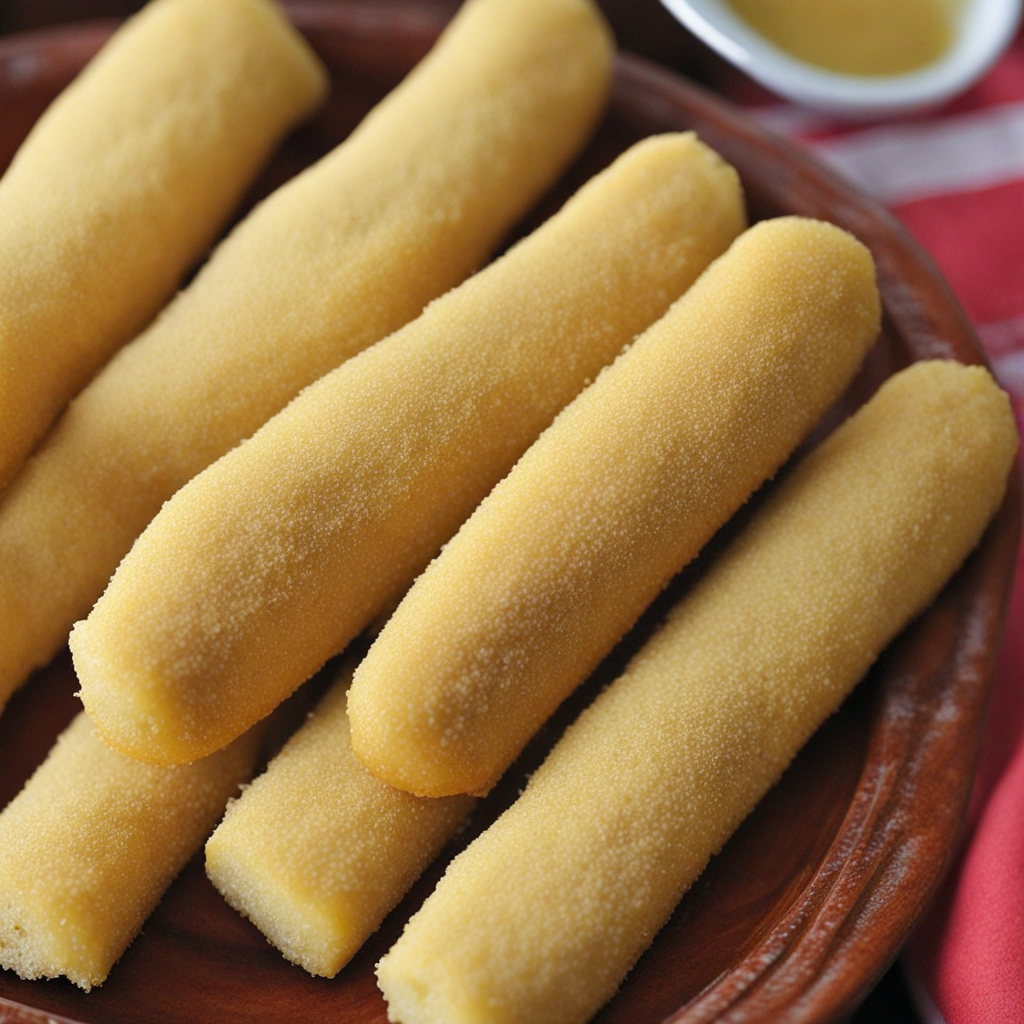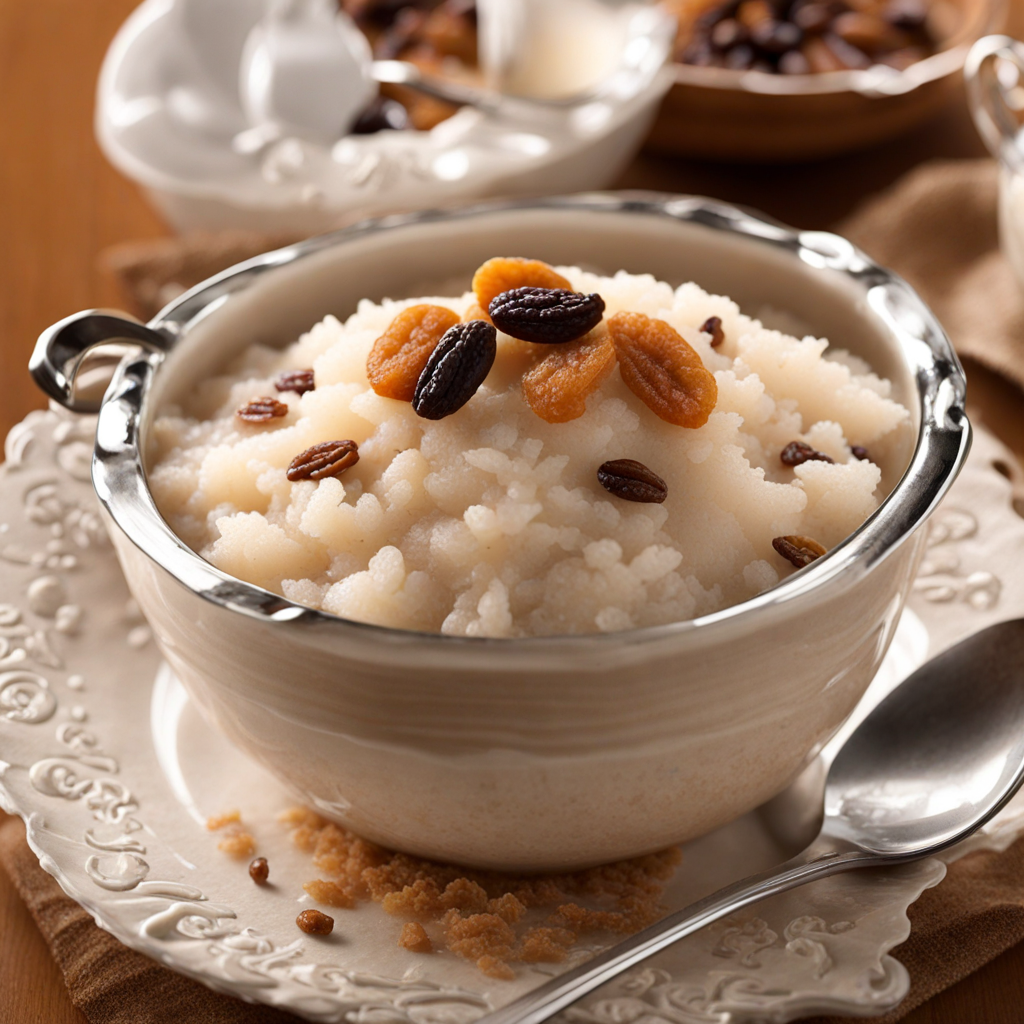Yuca con Mojo
Yuca con Mojo is a delightful Puerto Rican dish that showcases the unique flavors of the Caribbean. The star ingredient, yuca, also known as cassava, is a starchy root vegetable with a slightly nutty flavor and a chewy, satisfying texture. When boiled, yuca becomes tender and creamy, making it an excellent canvas for the vibrant and tangy mojo sauce that accompanies it. The combination of yuca's natural earthiness and the bold seasoning of the sauce creates a truly memorable taste experience. Mojo sauce is a zesty blend of garlic, sour orange juice, olive oil, and a variety of spices, which brings a burst of flavor to the dish. Fresh garlic cloves are often crushed and mixed with the citrusy notes of the sour orange, creating a bright and aromatic dressing that elevates the yuca. Some variations of the recipe may include herbs such as cilantro or parsley, adding an additional layer of freshness. The richness of the olive oil helps to marry the flavors, making each bite a harmonious explosion of taste. Served as a side dish or a hearty appetizer, Yuca con Mojo is perfect for those looking to explore Puerto Rican cuisine. Its simplicity is part of its charm, allowing the natural flavors of the yuca to shine through while being complemented by the vibrant mojo sauce. This dish not only offers an authentic taste of the island but also invites you to enjoy the rich culinary traditions that Puerto Rico has to offer, making it a must-try for adventurous food lovers.
How It Became This Dish
Yuca con Mojo: A Culinary Journey Through Puerto Rico #### Origins of Yuca Yuca, also known as cassava, is a starchy root vegetable native to South America. Its cultivation dates back thousands of years, with archaeological evidence suggesting it was domesticated by indigenous peoples around 2000 BC. Yuca became a staple food due to its adaptability to various climates and soils, effectively spreading through the Caribbean and parts of Africa and Asia. In Puerto Rico, yuca was embraced by the Taíno people, the island's indigenous inhabitants, who incorporated it into their diet long before European contact. The Taíno cultivated yuca as a primary carbohydrate source, utilizing it to prepare a variety of dishes. They made a flatbread called "casabe" by grating the root and extracting its toxic juices, which contain cyanogenic compounds. The remaining pulp was then dried and baked, producing a durable flatbread that could be stored for long periods. #### Cultural Significance Yuca holds a prominent place in Puerto Rican cuisine and culture. It symbolizes resilience and resourcefulness, as this hardy vegetable can thrive in less-than-ideal agricultural conditions. The introduction of yuca to Puerto Rico by the Taíno people laid the foundation for its enduring presence in local diets and culinary traditions. As the Spanish colonizers arrived in the 15th century, they recognized yuca's potential and integrated it into their culinary practices. The fusion of indigenous and Spanish influences gave birth to a unique Puerto Rican culinary identity. Yuca con mojo, in particular, emerged as a beloved dish that combines the earthy flavor of yuca with the zesty and aromatic notes of mojo—a garlic and citrus sauce that is a hallmark of Caribbean cuisine. #### The Dish: Yuca con Mojo Yuca con mojo typically features boiled yuca served with a sauce made from garlic, olive oil, sour orange juice (or lime), and seasonings. The preparation is straightforward, yet the combination of flavors elevates the dish to a level of culinary delight. The yuca is often cooked until tender, resulting in a texture that is creamy and slightly fibrous, while the mojo sauce adds a bright, tangy punch. The dish is commonly served as a side with various meats, particularly during family gatherings, celebrations, or holidays. It is often enjoyed alongside other traditional dishes such as pernil (roast pork) or arroz con gandules (rice with pigeon peas). Yuca con mojo exemplifies the heart of Puerto Rican cooking: simple ingredients transformed into something extraordinary through preparation and presentation. #### Evolution Through Time Over the centuries, yuca con mojo has evolved, reflecting the cultural shifts and influences that have shaped Puerto Rican society. The incorporation of yuca into the local diet has remained constant, but the methods of preparation and serving have diversified. As Puerto Rico became a melting pot of cultures—including African, Spanish, and Taíno influences—the flavors of mojo began to adapt. In African cuisine, the use of spices and bold flavors influenced the preparation of mojo. Some variations include the addition of herbs like cilantro or spices such as cumin, enhancing the sauce's complexity. The African diaspora brought new culinary techniques, including frying and stewing, which also made their mark on how yuca was prepared. With the arrival of the United States in the late 19th and early 20th centuries, Puerto Rican cuisine began to absorb elements from American cooking. This period saw the rise of convenience foods, and while yuca con mojo remained a cherished traditional dish, it also became more accessible. Pre-packaged sauces and frozen yuca made it easier for families to prepare this beloved dish without the labor-intensive steps that were once required. Moreover, the global popularity of Latin American cuisine has introduced yuca con mojo to a wider audience. As chefs and home cooks experiment with traditional recipes, they often incorporate modern twists, such as adding avocados or creating yuca fries served with mojo as a dipping sauce. These innovations highlight the dish's versatility while honoring its roots. #### Modern Interpretations and Global Influence In recent years, yuca con mojo has gained recognition beyond Puerto Rico, particularly in the context of the growing interest in Latin American and Caribbean cuisines. Restaurants and food trucks specializing in Puerto Rican fare have emerged in cities across the United States, offering yuca con mojo as a staple on their menus. This increased visibility has sparked curiosity about the dish, prompting many to explore its origins and significance. Social media platforms have played a significant role in promoting yuca con mojo and other traditional dishes. Food bloggers and influencers share recipes, cooking tips, and visually appealing presentations, contributing to a renaissance of interest in Puerto Rican culinary heritage. Through these platforms, yuca con mojo has become a symbol of cultural pride for Puerto Ricans both on the island and in the diaspora. Additionally, yuca itself has gained popularity as a gluten-free alternative to traditional grains, appealing to health-conscious consumers. This trend has led to a broader acceptance of yuca and its derivatives, such as yuca flour, in various culinary applications. Yuca con mojo can now be found not only in traditional settings but also in contemporary restaurants, fusion cuisine, and even health-focused eateries. #### Conclusion Yuca con mojo is more than just a dish; it embodies a rich tapestry of history, culture, and community. From its indigenous roots to its modern interpretations, yuca con mojo tells a story of resilience, adaptation, and celebration. As Puerto Rican cuisine continues to evolve and gain recognition worldwide, this beloved dish remains a cherished link to the island's past and a vibrant part of its culinary future. Whether enjoyed at a family gathering or discovered in a trendy restaurant, yuca con mojo stands as a testament to the enduring legacy of Puerto Rican food culture.
You may like
Discover local flavors from Puerto Rico



